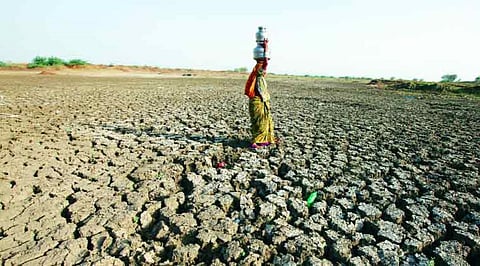
- Topics
- Feature
- Opportunities & Events
- About
- Hindi Portal
- Data
- Topics
- Feature
- Opportunities & Events
- About
- Hindi Portal
- Data

The state of Maharashtra continues to have inequitable access to water resources , where some regions enjoy year-round water supply, while others struggle with severe shortages and reliance on water tankers. This uneven distribution of water resources has long-term implications for the development of the state and the well being of its people argues this study titled 'Regional Disparity in Water Supply and Scarcity in Maharashtra: An Analysis from 2010 to 2022' published in the Journal of Indian Water Works Association.
This study assesses the water supply situation across six major regions of Maharashtra i.e. Chhatrapati (C) Sambhajinagar, Pune, Nashik, Konkan, Amravati, and Nagpur, over a 12-year period, from 2010 to 2022. The study examines how water availability and scarcity have shifted in these regions and aims to uncover patterns of inequality and how public policies and investments have shaped the water landscape
The study uses time-series data collected from 2010 to 2022 for six regions of Maharashtra i.e. C. Sambhajinagar, Pune, Nashik, Konkan, Amravati, and Nagpur sourced from the District-wise Socio-Economic Reviews published by the Directorate of Economic and Statistics, Government of Maharashtra,
The study finds that:
Konkan region has the highest villages with continuous water supply
Over 90 percent of villages have access to water for all 12 months in Konkan region while in C. Sambhajinagar only 75.42 percent of villages have full-year water access by 2022.
C Sambhajinagar is the most water scarce region
C. Sambhajinagar is the most water scarce region with approximately 3,137 villages experiencing water scarcity annually. Konkan with 533 villages, has the lowest number of villages facing water scarcity.
Tanker dependency
Sambhajinagar has the highest tanker dependency while in Konkan an average of of 264 villages still depend on tankers due to poor water management practices inspite of plentyful rainfall.
Expenditure on water and sanitation
Government expenditure on water infrastructure is highest in C Sambhajinagar and Konkan, but inequality in water distribution still prevails in C. Sambhajinagar and Amravati.
Disparity in water accessibility
Sambhajinagar shows maximum inequality in distribution of water resources, which shows an increase since 2014 before stabilising in 2021 and 2022. Water resources in Pune are distributed more equitably compared to other regions while Konkan shows the lowest inequality in water distribution.
The study argues for the need for:
Rainwater harvesting, groundwater recharge, and improving water distribution systems to ensure more reliable access in priority regions such as C Sambhajinagar and Amravati.
Develop climate-resilient infrastructure in drought-prone areas, to better manage the effects of unpredictable rainfall and ensure year-round water availability.
Focusing on the most underserved districts and ensuring that government funding reaches them
Ensuring better oversight and accountability in water infrastructure